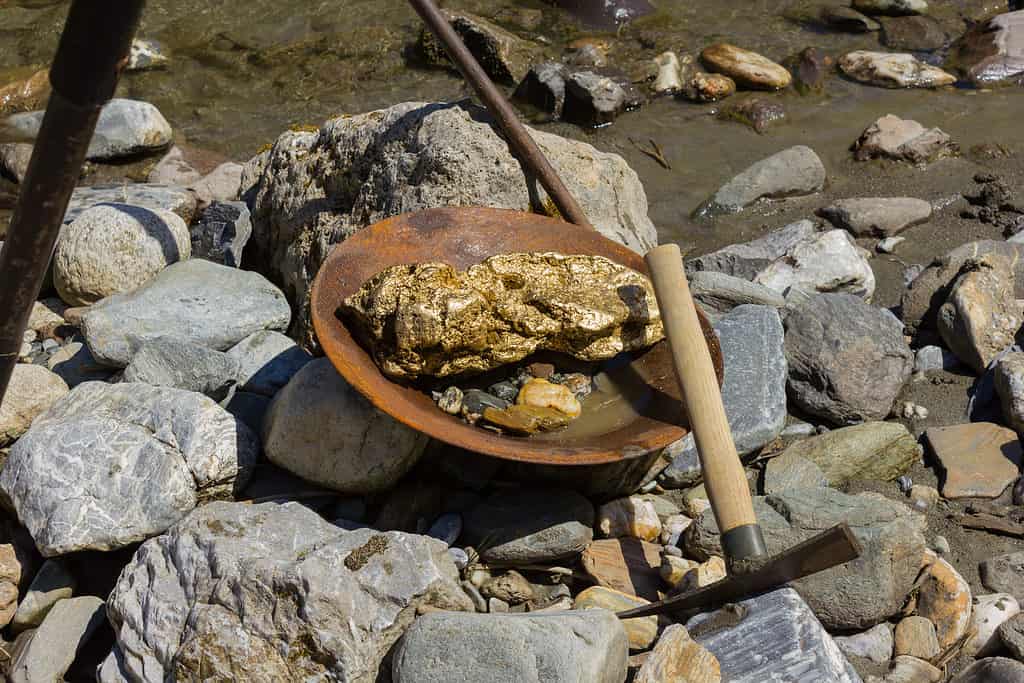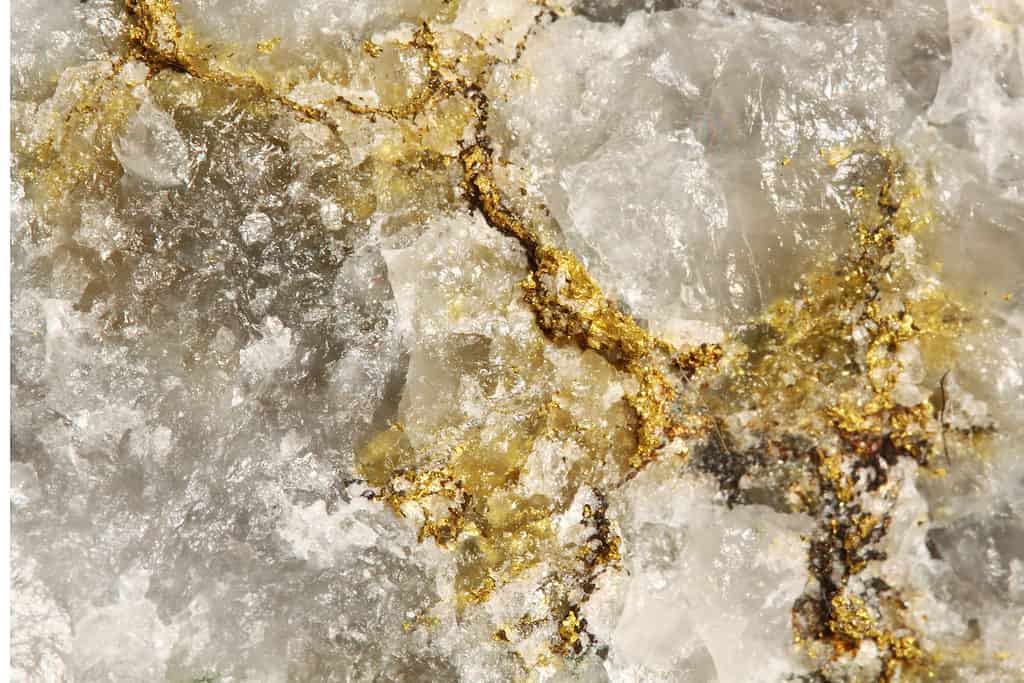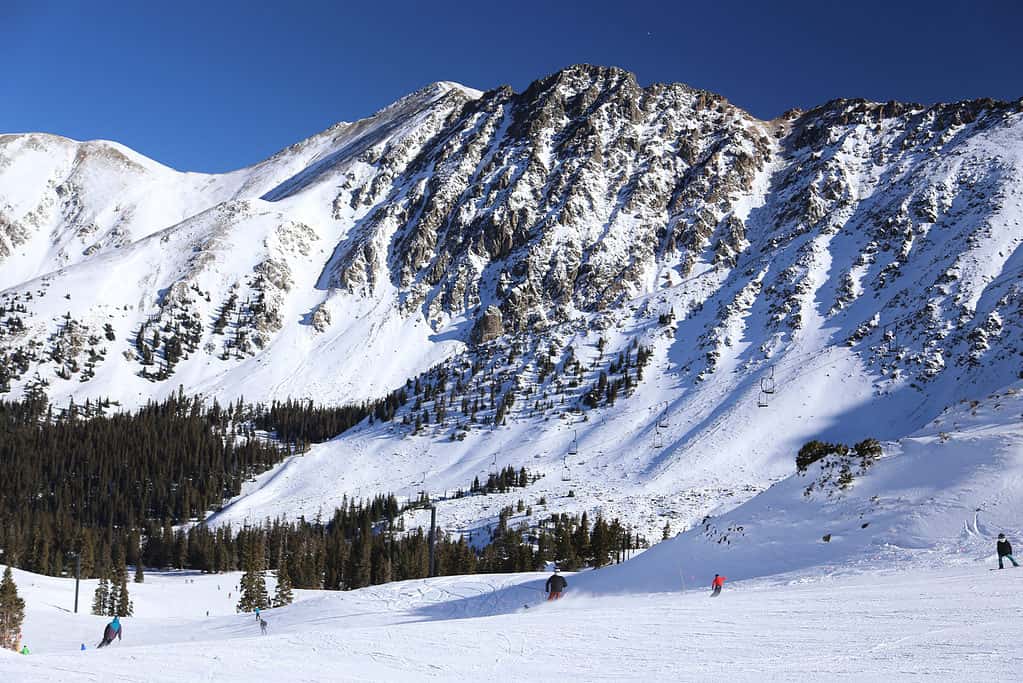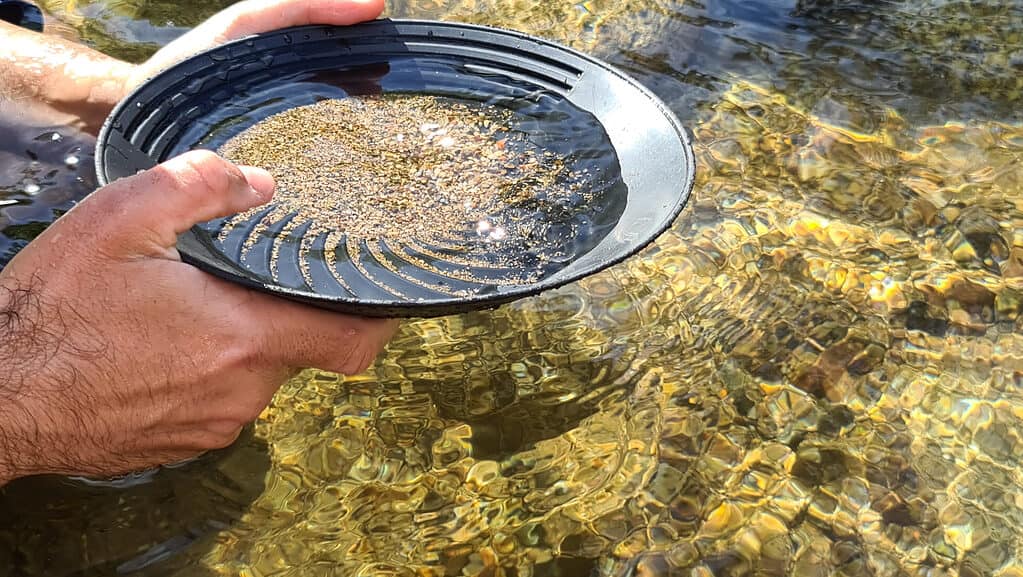Ever since Europeans came across the Americas, finding gold quickly became one of the major driving forces behind colonization. However, aside from the 1799 discovery of gold in North Carolina, the eastern United States has been largely gold-free. So, when gold was discovered out west, many people flooded in for their shot at the untapped fortune. Like other western states, Colorado experienced a gold rush in the mid-19th century. The largest gold nugget ever found in Colorado is bigger and more valuable than you probably imagine. Its weight is measured in pounds, not ounces. Read on for the full story!

Large gold nuggets have been discovered in Colorado since the mid 19th century.
©Flugklick/Shutterstock.com
Where Can You Find Gold?
Gold occurs naturally in igneous rock formations, such as quartz, or by intrusions of magma into softer rock formations. When found in veins still in its original geologic formations, gold is called “lode” gold. As erosion washes nuggets and flecks of gold down mountain streams, they settle in river bottoms and shores. Gold hunters can find them by panning to separate gold from sand and pebbles. This kind of gold is called “placer” gold. When placer gold is found in a stream, prospectors can search upstream for the lode gold sources that produce it. Some formations in Colorado produce crystalized gold, with a rough structure that has not been smoothed by weather and erosion. Because this kind of gold is rare and beautiful, it can literally be worth more than its weight in gold.

Gold ore is often found embedded in veins in quartz formations.
©Mironov56/Shutterstock.com
The Colorado Gold Rush
Gold has always existed in the Colorado region. But it was the discovery of gold near modern-day Denver in 1858 that brought thousands of people to the territory. This rush was key in the founding of major Colorado cities, and even Colorado’s formation as an official U.S. state.
Throughout the gold rush years, tons of valuable placer gold and beautiful nuggets of crystalized gold were found in Colorado. In 1887, prospectors Tom Groves and Harry Lytton discovered the largest gold nugget ever found in Colorado. Originally weighing around 13.5 pounds, the nugget was named “Tom’s Baby.” Tom Groves would carry the nugget around wrapped in his jacket, cradled like a baby. At today’s gold price of about $1,880 an ounce, Tom’s Baby would be worth over $460,000.
Tom’s Baby was exceptionally rare, not just due to its incredible size, but because it was made of crystalized gold. This is a unique combination that makes it almost impossible to put a price on. Mysteriously, while the nugget was in storage, a three pound chunk of it went missing. However, the slimmed-down 10.5-pound Tom’s Baby still remains undefeated as the largest gold nugget ever found in Colorado.

The
Rocky Mountains
of Colorado are igneous formations that are rich in valuable minerals, including gold.
©Steve Boice/Shutterstock.com
Where Is Colorado Located on a Map?
Colorado is situated in the Mountain West sub-region in the western part of the U.S. Utah is to state’s west, Kansas is to its east, and Nebraska is to the northeast. Colorado is south of Wyoming and north of New Mexico and Oklahoma. It is is home to the majority of the Southern Rocky Mountains, Colorado Plateau’s northeastern section, and the Great Plains’ western edge.
Finding Gold in Modern Colorado
Colorado has been one of the highest gold-producing states in American history, but gold prospecting isn’t just in the past. While you might think by now all the gold has been taken from Colorado, there’s still plenty more out there. Every year, Coloradans and visitors to the state find nuggets and gold dust. While certain lands may require a permission to use, the state of Colorado has no license for gold panning. Over a hundred free unrestricted lands lie across the state, ready and waiting for eager gold hunters. Who knows, maybe you’ll find the next Tom’s Baby!

Panning for gold is a fun recreational activity you and your family can do on your next visit to Colorado.
©iStock.com/Kaszojad
The photo featured at the top of this post is © iStock.com/bodnarchuk
FAQs (Frequently Asked Questions)
What is the largest gold nugget ever found in Colorado?
In 1887, prospectors Tom Groves and Harry Lytton discovered the largest gold nugget ever found in Colorado. Originally weighing around 13.5 pounds, the nugget was named “Tom’s Baby” because Tom Groves would carry the nugget around wrapped in his jacket, cradled like a baby. At today’s gold price of about $1,880 an ounce, Tom’s Baby would be worth over $460,000.
What is the difference between lode gold and placer gold?
Lode gold is the term for veins of gold in their original rock formations, such as quartz. Placer gold refers to nuggets and flecks of gold that are eroded from their original formations and wash down mountain streams, where prospectors can find them by panning for gold.
Can people still pan for gold today?
Yes, you can pan for gold on private property with the permission of the owner, or on state or federal lands that permit it. Regulations may differ state to state and within different regions of states. Check with the proper authorities before attempting to pan for gold recreationally.
Thank you for reading! Have some feedback for us? Contact the AZ Animals editorial team.






